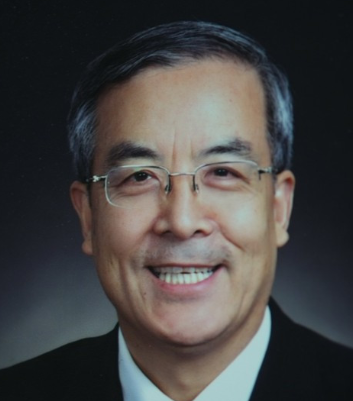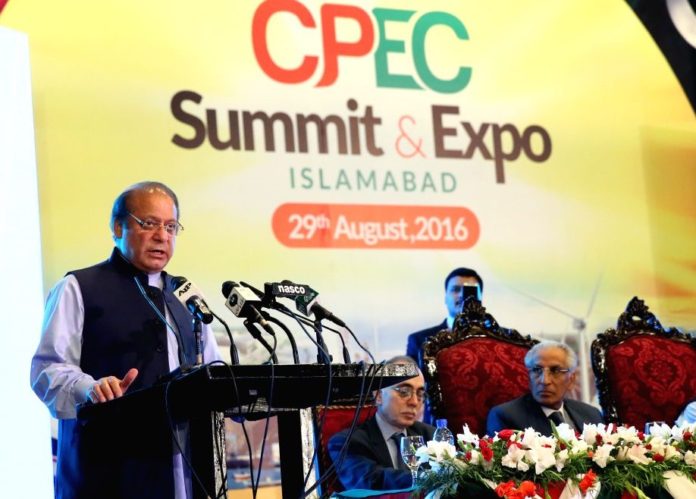The China-Pakistan Economic Corridor (CPEC) is the focus of attention for the people of Pakistan because of its rich and far-reaching benefits. CPEC is part of China’s strategic ‘One-Belt, One Road’ initiative, known as OBOR, which talks about connecting about 64 countries in three continents. “The OBOR will be the largest economic belt in human history that will link Central Asia, South Asia, South East Asia and Africa,” said China Institute of International Studies President Su Ge. With the bulk of the corridor expected to be ready and operational by 2025, the future appears promising.
The CPEC summit and expo on August 29 was a landmark event. Attendance by all Chief Ministers and their unambiguous resole for implementation of CPEC indicated the emergence of national consensus on this vital project. It also implies that most, if not all, of reservations of provinces stand addressed.
Prime Minister Nawaz Sharif rightly declared that CPEC will not just be a game-changer but a fate-changer. He pointed out that though economic value of the project is 46 billion dollars, its overall impact is much deeper and far-reaching. He referred to the greater economic activity to be generated by the completion of early harvest projects by 2018; and that CPEC’s western route shall be ready by 2018.
Chinese Ambassador Sun Weidong expressed satisfaction over the pace of work on the corridor project, and thus put to rest the rumors that CPEC faced economic and timeframe related difficulties. Prime Minister Nawaz Sharif stated that multiple projects under the CPEC banner would add 30,000MW of energy over the next 10 years and bring development to Balochistan, Gilgit-Baltistan and the western belt of Khyber Pakhtunkhwa.
On must appreciate that within a short span of three years, despite a loss of eight months due to domestic political crises, projects worth $18 billion stand actualized. Moreover, investment projects worth $17 billion are in the pipeline, to be launched within a year or so. This is a remarkable story of devotion, commitment and hard work of Pakistani and Chinese experts and workers involved in the CPEC. Assessments have it that once the corridor becomes operational, Pakistan would acquire a central position in world trade.
As of now, most of the early harvest projects are in a lag, but one must remember that all such project invariably suffer from delay—especially during initial phases— and multiple cost overruns. Moreover, domestic undercurrents of misgiving remain relevant, even today. Of these, a few misgiving are real, some are speculative, while majority are sponsored by vested interests both domestic and foreign.
A senior Chinese official recently pointed out land acquisition issues while another said that ethnic differences could be a cause of concern if left unheeded. The Finance Minister gave a timely call for political and provincial unity over the CPEC. Earlier the Planning and Development Minster had done well by handing over sealed copy of CPEC Agreement to Chairman Senate [and presumably to speaker National Assembly as well] for consultation by parliamentarians. Moreover, the Chinese believe in inclusive regional development. There is need to make the bidding process as transparent as possible, even though confidentiality is a Chinese requirement.
Anything that promises an early end to the painful load shedding of electricity and gas sells well in Pakistan; it is also an important electoral issue carrying a huge number of swing voters; hence a timely completion of energy related projects is very close to Prime Minister’s heart. Some even say the next election would centre around government’s ability to deliver on energy related promises; thus strong commitment to energy projects by the Chinese is another positive.
Chinese concerns over security and global interference will require robust course correction in governance related issues and political pacifications, by convincing the people and leadership of Balochistan and KPK that the CPEC is in their benefit. The political situation of Balochistan requires immediate actions with regard to return of exiled leadership.

CPEC is the focus of conspiracies by our enemies, as well as some friendly countries. The Americans have already started applying oblique pressures to squeeze Pakistan. Since the beginning of conceptual work on CPEC, almost one third of American aid has dried up on one flimsy pretext or the other; and America has taken several steps to elevate India’s strategic potential to the peril of Pakistan and China. Recent Indo-US Logistics Exchange Memorandum of Agreement is an important step towards joint Indo-US strategy to contain China, and as a corollary, Pakistan. To mitigate international meddling and muddying, China and Pakistan need to take collective measures.
India has set up a special cell of RAW to sabotage the project with a generous one billion rupees budget; it has also set up a similar cell at Afghan National Directorate of Security (NDS) headquarters, the Afghan equivalent of RAW, for coordinating anti-CPEC activities. Moreover, agencies of several other countries are also active in undermining CPEC because of their unfounded strategic and economic concerns. There is indeed a grand international design against CPEC; and a couple of local poodles are keen to jump into their lap.
CPEC’s long term plan identifies key areas. Most of the pillars of the long-term plan will deal with the provincial projects and the contribution of provinces will be critical for their success. Some of the areas covered under the plan are: agricultural information project, storage and distribution of agricultural equipment and construction project, agricultural mechanization, demonstration and machinery leasing project, fertilizer production project for producing 800,000 tons of fertilizer and 100,000 tons of bio-organic fertilizer, livestock and poultry breeding, development of an integrated transport system, IT connectivity, energy cooperation, industrial parks, agricultural development, poverty alleviation, etc.
As per envisaged economic targets, gross domestic product will grow by 1.5% from 2016-20 and another 1% from 2020-30. Annual average trade would increase by 24% from 2016 to 2020 and an additional 16% from 2020 to 2030. The annual average investment growth is expected to be 25% from 2016 to 2030. Contribution of industry as a percentage of GDP would increase by 1.5% and about 800,000 new jobs would be created.
As regards regulated flow of investment, China Development Bank has prepared the draft of a long-term investment plan. It talks about establishing a bilateral payment and settlement mechanism to reduce the need for third-party money and ease the pressure on foreign exchange reserves. Central banks will put in place a relatively stable exchange rate mechanism and continue to implement and expand the scope of bilateral currency swap agreements to Rs. 520 billion.
The Army Chief, General Raheel Sharif has, time and again, reaffirmed the Pakistan military’s resolve to provide full security for the purpose. A Special Security Division comprising 9,000 Pakistan Army soldiers and 6,000 para-military personnel has already been set up—at a fantastic speed. In addition to efforts by the provincial governments, the federal government has chipped in Rs. 1.3 billion for CPEC security. It is important that the issue of provision of security to CPEC should not tackled piecemeal, rather a comprehensive security concept be evolved for the security of Chinese workers, covering the entire period from their stepping into Pakistan till their departure.
When others were writing off Pakistan as an economic partner, China showed trust. CPEC shall turn this friendship into a strategic economic partnership. In 2014, there were 12 other countries that were investing more in Pakistan in terms of foreign direct investment (FDI) than China. Today Chinese FDI in Pakistan has reached the number one spot.
CPEC will be a test of Pakistan on multiple fronts, accentuating and exposing all the major problems afflicting the country, at least in the short to medium time frame; however, these would begin to dissipate as CPEC nears completion. No matter what difficulties come our way, we should focus on the broader picture.




